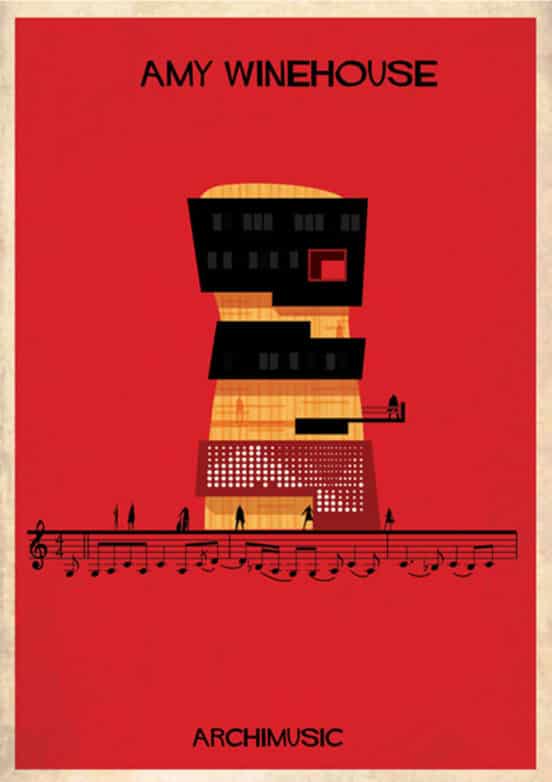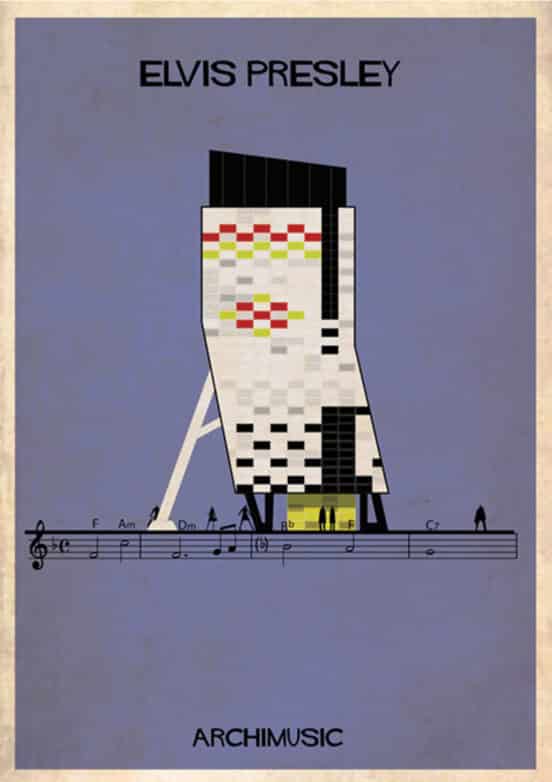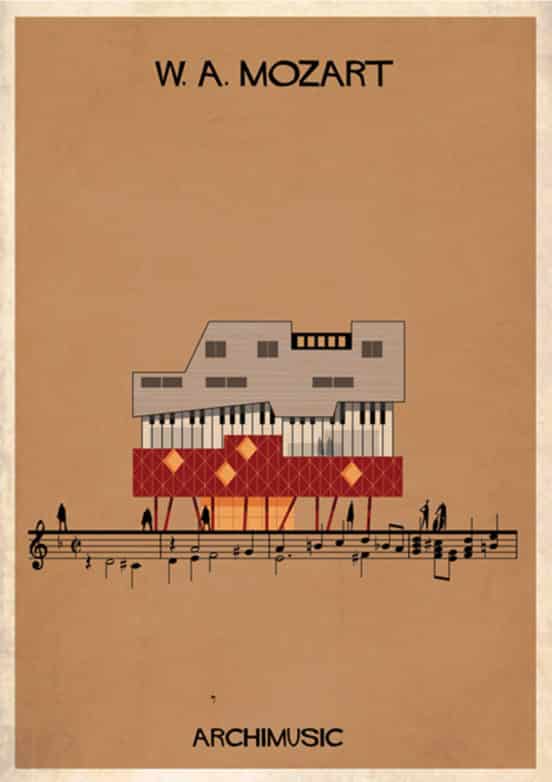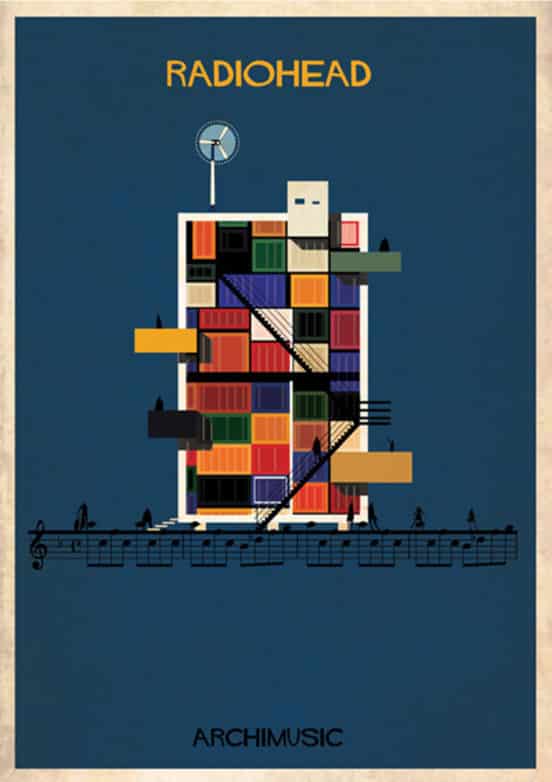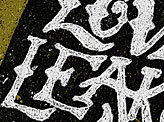Italian architect and illustrator Federico Babina has taken 27 popular songs and transformed them into cartoon buildings. The series features artists like Amy Winehouse, David Bowie, W.H. Mozart, Elvis Presley, Miles Davis, Radiohead, Joy Division, J.S. Bach, Blur, and the White Stripes, and translates them into a new art form.
Babina is known for daring illustration experiments. His last series, ARCHIATRIC, was about the tortured genius mythology that suggests many incredibly creative people suffered from psychological illnesses. His series explored the link between creativity and psychopathology, focusing on painters, artists, architects, poets and others who are leaders in their field. His illustrations also included animated video and images. “In this series of images, I make an abstract exercise of translating one language to another,” Babina said.
Babina was born in Italy in 1969 and now lives and works in Barcelona. He describes himself first and foremost as a curious person. Every day I try to rediscover a way to observe the world as through the eyes of a child. Children are able to have a vision of things totally uninhibited and without the conditioning of the experience.”
Babina notes that he draws inspiration first from children’s art. “The children’s drawings are always amazing and beautiful in their spontaneous simplicity and clarity.” His series on musicians builds upon another project, called “ARCHIST CLASSIC,” wherein he imagined what a particular artist, like Matisse, Caravaggio, or Basquiat, would embody if he or she was a home. The goal was to become a kind of portrait of the artist.
In his series on great composers and pop stars, Babina is doing what he enjoys the most, “trying to explain the world I see through different techniques of expression. I like the richness of the language and the diversity of its forms. I do not want to confine me in a prison of a style or shape. Drawing and illustration are for me one of the ways to recount and photograph the thoughts, feelings and Emotions.”
Babina is no stranger to blending fantasy with reality. He had another project where he imagined the architecture of fairy tale characters. By focusing on who they are as archetypes, rather than what buildings they inhabited in the tale, Babina could explore ke aspects of the story. For example, “the long nose of pinocchio becomes an extruded wooden window; hansel and gretel’s need for sweets is illustrated as a gingerbread façade; and the princess and the pea’s obsession with perfection is reflected in a carefully stacked structure — with a pea-shaped void.”
Another project with similar structure involved creating a movie poster that exudes the persona of Babina’s favorite directors, like Spike Lee, Charlie Chaplin, the Coen Brothers, and Alfred Hitchcock, among others.
In deconstructing our expectations, Babina can shine a light on different facets of a person’s life, music and persona. Ultimately, Babina’s goal with the new series is to fulfill his ultimate mantra: “Every picture has a story and every picture is a witness of a story.”







